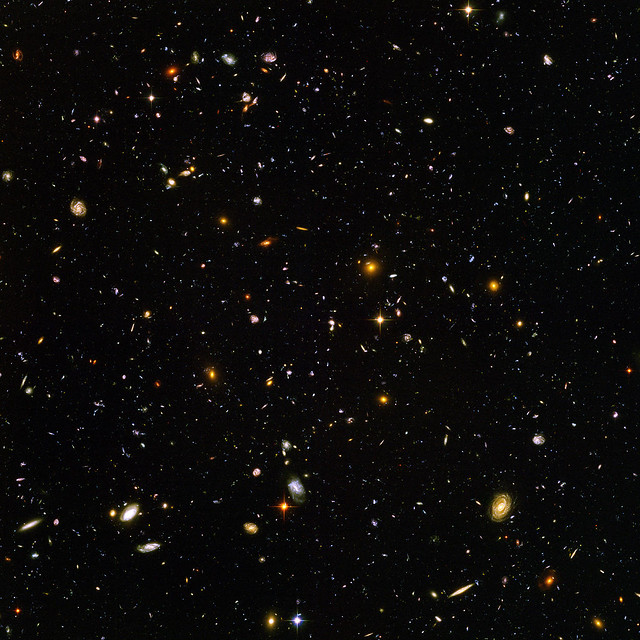Big Bang Monday: Fly Through Andromeda
Monday, January 19th, 2015Via EarthSky, a 1.5 billion pixel image of Andromeda galaxy, interpreted as a “fly-through.” The image is huge (69,536 x 22,230).
Via EarthSky, a 1.5 billion pixel image of Andromeda galaxy, interpreted as a “fly-through.” The image is huge (69,536 x 22,230).

Just in time for the 12-12-12 Concert to benefit Sandy victims, Phil Plait’s piece in Slate suggests the Bon Jovi song…
Oh!
Shot through the heart
And you’re to blame
You give love a bad name
I play my part and you play your game
You give love a bad name (bad name)
Just watch the video from the Hubble folks…
Fantastic collection of the Hubble Space Telescope’s “Top 100 Images” on the ESA site. All beautiful, with some more interesting that others. For example, the “engraved hourglass nebula” or MyCn18…
This is an image of MyCn18, a young planetary nebula located about 8,000 light-years away, taken with the Wide Field and Planetary Camera 2 (WFPC2) aboard the Hubble Space Telescope (HST).
This Hubble image reveals the true shape of MyCn18 to be an hourglass with an intricate pattern of ‘etchings’ in its walls. This picture has been composed from three separate images taken in the light of ionized nitrogen (represented by red), hydrogen (green), and doubly-ionized oxygen (blue).
The results are of great interest because they shed new light on the poorly understood ejection of stellar matter which accompanies the slow death of Sun-like stars. In previous ground-based images, MyCn18 appears to be a pair of large outer rings with a smaller central one, but the fine details cannot be seen.
Credit: Raghvendra Sahai and John Trauger (JPL), the WFPC2 science team, and NASA/ESA

WTF is HUDF? Hubble Ultra Deep Field, KWIM?
It’s the deepest ever. Seriously:
The Hubble Ultra-Deep Field (HUDF) is an image of a small region of space in the constellation Fornax, composited from Hubble Space Telescope data accumulated over a period from September 24, 2003, through to January 16, 2004. It is the deepest image of the universe ever taken,[1] looking back approximately 13 billion years (between 400 and 800 million years after the Big Bang), and it will be used to search for galaxies that existed at that time. The HUDF image was taken in a section of the sky with a low density of bright stars in the near-field, allowing much better viewing of dimmer, more distant objects. The image contains an estimated 10,000 galaxies. In August and September 2009, the Hubble’s Deep Field was expanded using the infrared channel of the recently attached Wide Field Camera 3 (WFC3). When combined with existing HUDF data, astronomers were able to identify a new list of potentially very distant galaxies.[2]
Located southwest of Orion in the southern-hemisphere constellation Fornax, the image covers 11.0 square arcminutes. This is just one-seventieth the solid angle subtended by the full moon as viewed from Earth, smaller than a 1 mm-by-1 mm square of paper held 1 meter away, and equal to roughly one thirteen-millionth of the total area of the sky. The image is oriented so that the upper left corner points toward north (−46.4°) on the celestial sphere.
This would look good on your wall.